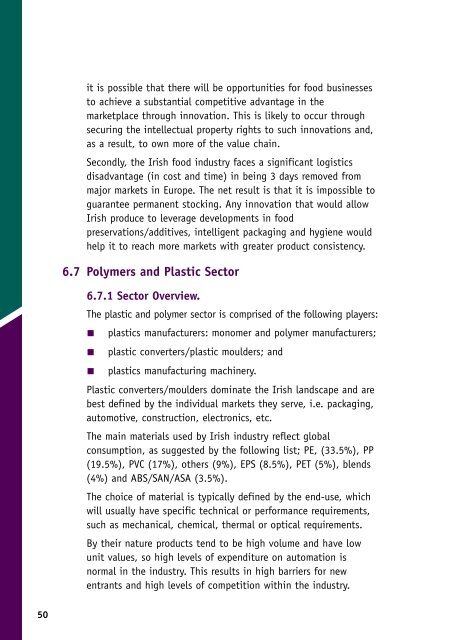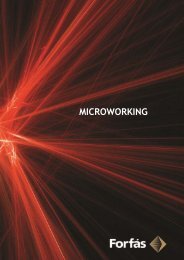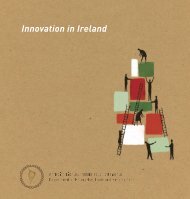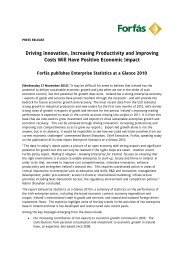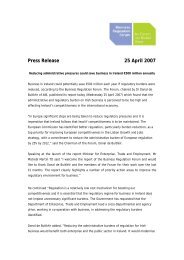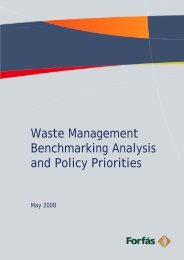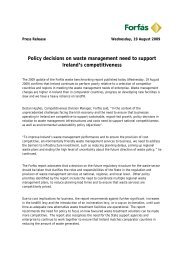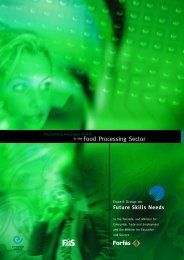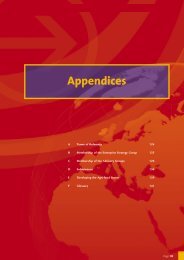ICSTI Statement on Nanotechnology - Forfás
ICSTI Statement on Nanotechnology - Forfás
ICSTI Statement on Nanotechnology - Forfás
Create successful ePaper yourself
Turn your PDF publications into a flip-book with our unique Google optimized e-Paper software.
50<br />
it is possible that there will be opportunities for food businesses<br />
to achieve a substantial competitive advantage in the<br />
marketplace through innovati<strong>on</strong>. This is likely to occur through<br />
securing the intellectual property rights to such innovati<strong>on</strong>s and,<br />
as a result, to own more of the value chain.<br />
Sec<strong>on</strong>dly, the Irish food industry faces a significant logistics<br />
disadvantage (in cost and time) in being 3 days removed from<br />
major markets in Europe. The net result is that it is impossible to<br />
guarantee permanent stocking. Any innovati<strong>on</strong> that would allow<br />
Irish produce to leverage developments in food<br />
preservati<strong>on</strong>s/additives, intelligent packaging and hygiene would<br />
help it to reach more markets with greater product c<strong>on</strong>sistency.<br />
6.7 Polymers and Plastic Sector<br />
6.7.1 Sector Overview.<br />
The plastic and polymer sector is comprised of the following players:<br />
plastics manufacturers: m<strong>on</strong>omer and polymer manufacturers;<br />
plastic c<strong>on</strong>verters/plastic moulders; and<br />
plastics manufacturing machinery.<br />
Plastic c<strong>on</strong>verters/moulders dominate the Irish landscape and are<br />
best defined by the individual markets they serve, i.e. packaging,<br />
automotive, c<strong>on</strong>structi<strong>on</strong>, electr<strong>on</strong>ics, etc.<br />
The main materials used by Irish industry reflect global<br />
c<strong>on</strong>sumpti<strong>on</strong>, as suggested by the following list; PE, (33.5%), PP<br />
(19.5%), PVC (17%), others (9%), EPS (8.5%), PET (5%), blends<br />
(4%) and ABS/SAN/ASA (3.5%).<br />
The choice of material is typically defined by the end-use, which<br />
will usually have specific technical or performance requirements,<br />
such as mechanical, chemical, thermal or optical requirements.<br />
By their nature products tend to be high volume and have low<br />
unit values, so high levels of expenditure <strong>on</strong> automati<strong>on</strong> is<br />
normal in the industry. This results in high barriers for new<br />
entrants and high levels of competiti<strong>on</strong> within the industry.


